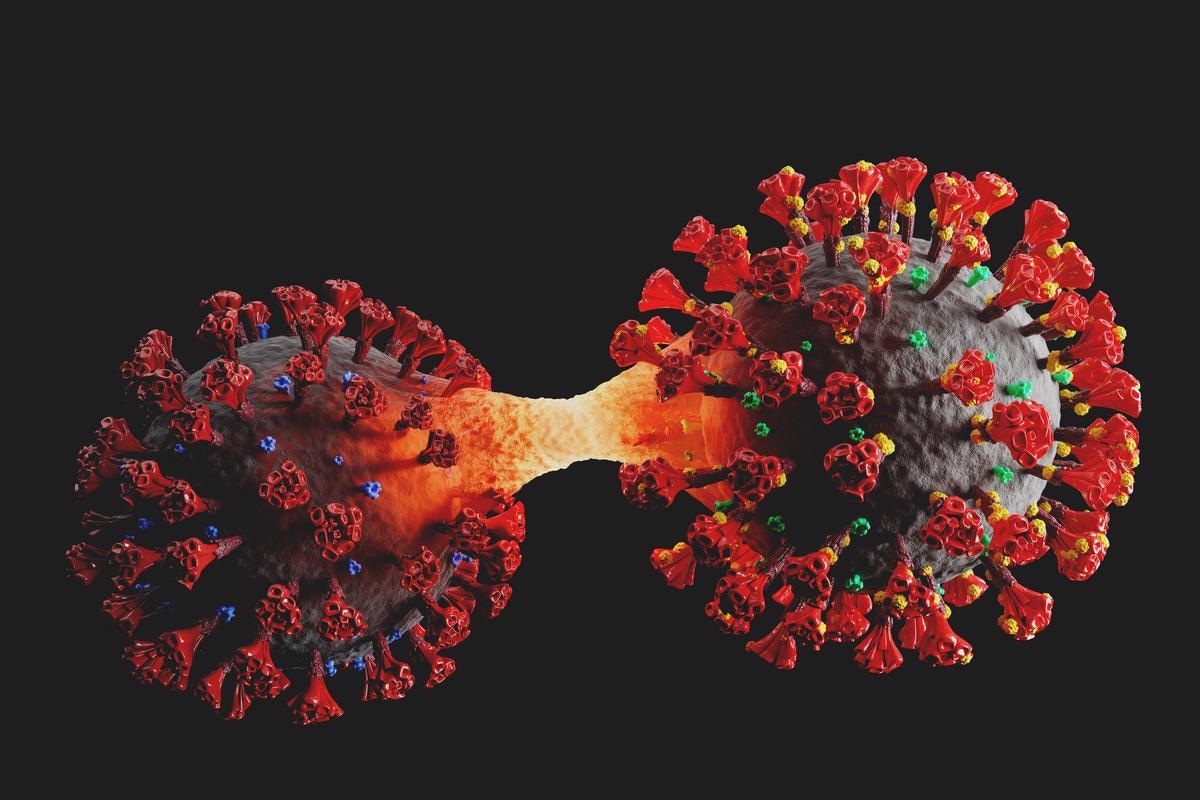The severe acute respiratory syndrome coronavirus 2 (SARS-CoV-2) delta variant is diverse, with more than 120 sublineages within the Pango lineages. With more than 157 million doses of the anti-SARS-CoV-2 vaccine administered and approximately 124 million people fully vaccinated, Brazil is one of the most vaccinated nations globally.
 Study: SARS-CoV-2 genomic monitoring in the São Paulo State unveils new sublineages of the AY.43 strain. Image Credit: PHOTOCREO Michal Bednarek/Shutterstock
Study: SARS-CoV-2 genomic monitoring in the São Paulo State unveils new sublineages of the AY.43 strain. Image Credit: PHOTOCREO Michal Bednarek/Shutterstock

 This news article was a review of a preliminary scientific report that had not undergone peer-review at the time of publication. Since its initial publication, the scientific report has now been peer reviewed and accepted for publication in a Scientific Journal. Links to the preliminary and peer-reviewed reports are available in the Sources section at the bottom of this article. View Sources
This news article was a review of a preliminary scientific report that had not undergone peer-review at the time of publication. Since its initial publication, the scientific report has now been peer reviewed and accepted for publication in a Scientific Journal. Links to the preliminary and peer-reviewed reports are available in the Sources section at the bottom of this article. View Sources
This high vaccination rate may also help in the selection of novel SARS-CoV-2 lineages and sublineages because of the accumulation of viral mutations that lead to viral fitness. Despite the preexisting gamma variant of concern (VOC) being fully replaced by the delta VOC in Brazil, no exponential growth of the new infections has been observed, probably due to the good vaccination rate.
The study
In a study published in the medRxiv* preprint server, the authors characterized the two novel AY.43 sublineages of the SARS-CoV-2 delta variant with probable Brazilian origin. This was attributed to the observed specific clustering and specific mutation profile in the phylogenetic tree generated by Nextstrain. The raw sequence data were submitted to quality control analysis using the FastaQC software and trimmed using Trimmomatic to select the best quality sequences. The trimmed sequences were mapped against the SARS-CoV-2 reference using BWA software and samtools for reading indexing.
Pilon was used to refine the mapped files and obtain the correct indels and insertions and bcftools were used for variant calling and seqtk to assemble the consensus SARS-CoV-2 genomes. The phylogeny of the AY.43 hypothetical sublineages was reconstructed using 1,616 SARS-CoV-2 sequences generated from the Butantan Network for Pandemic Alert of SARS-CoV-2 variants.
The authors found AY.43.1 and AY.43.2 as the two novel Brazilian sublineages belonging to the AY.43 lineage. Both the novel sublineages were defined by the following characteristic nonsynonymous mutations -ORF1ab:A4133V and ORF3a:T14I for AY.43.1 and ORF1ab:G1155C for AY.43.2. The majority of the analyzed sequences of both lineages originated from the city of São Paulo.
Discussion
The study showed the crucial importance of the SARS-CoV-2 genomic surveillance to identify emerging lineages. These emerging SARS-CoV-2 lineages may significantly impact the public health systems due to increased infectivity and transmission. The T14I mutation in the ORF3a shows deleterious effects on the viral proteins. A nonsynonymous mutation in a conserved protein ORF3a, involved in viral replication and release, may affect viral functions in addition to the mutational constellation defined for the SARS-CoV-2 Delta variant.
Further studies may explore the reason for disseminating the two sublineages in São Paulo State and Brazil and their potential impact on the ongoing vaccination process. In conclusion, the molecular surveillance of the SARS-CoV-2 variants plays an important role in the rapid characterization of the virus and the accumulation of mutations that can alter the viral functions in terms of infectivity and transmissibility and help in implementing strategies to prevent their dissemination.
In conclusion, we show that SARS-CoV-2 genome monitoring is crucial for the prompt characterization of SARS-CoV-2 novel lineages and sublineages.”

 This news article was a review of a preliminary scientific report that had not undergone peer-review at the time of publication. Since its initial publication, the scientific report has now been peer reviewed and accepted for publication in a Scientific Journal. Links to the preliminary and peer-reviewed reports are available in the Sources section at the bottom of this article. View Sources
This news article was a review of a preliminary scientific report that had not undergone peer-review at the time of publication. Since its initial publication, the scientific report has now been peer reviewed and accepted for publication in a Scientific Journal. Links to the preliminary and peer-reviewed reports are available in the Sources section at the bottom of this article. View Sources
Article Revisions
- May 8 2023 - The preprint preliminary research paper that this article was based upon was accepted for publication in a peer-reviewed Scientific Journal. This article was edited accordingly to include a link to the final peer-reviewed paper, now shown in the sources section.